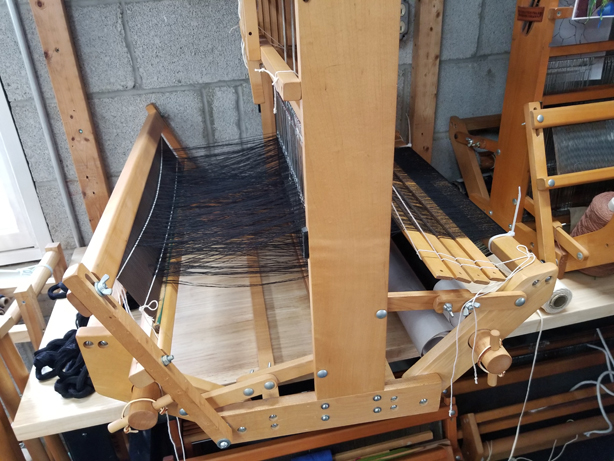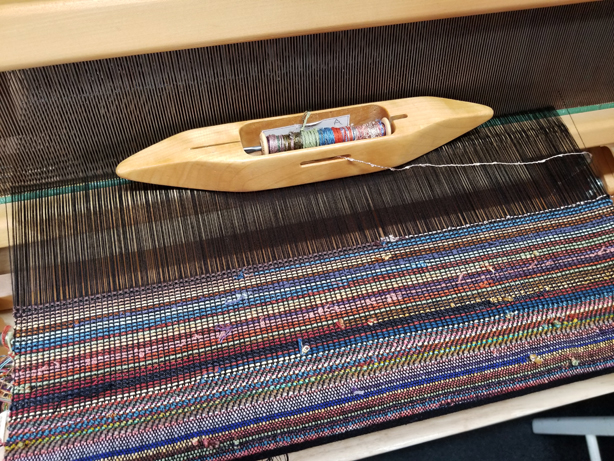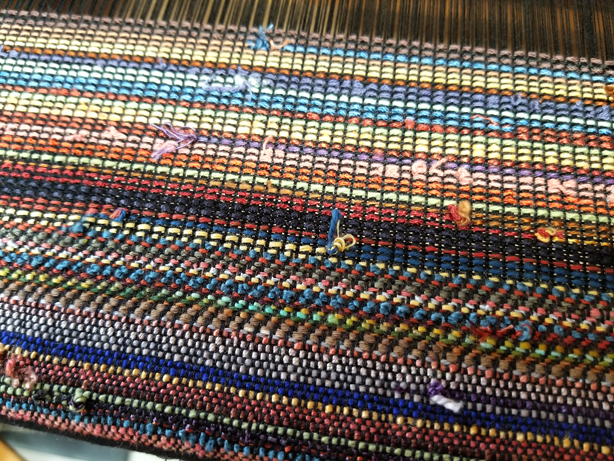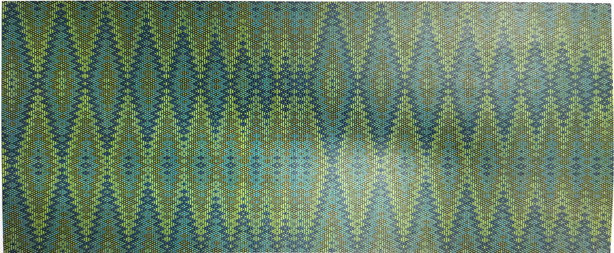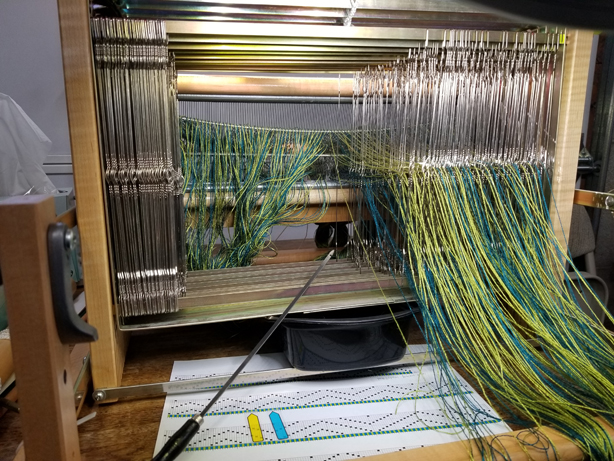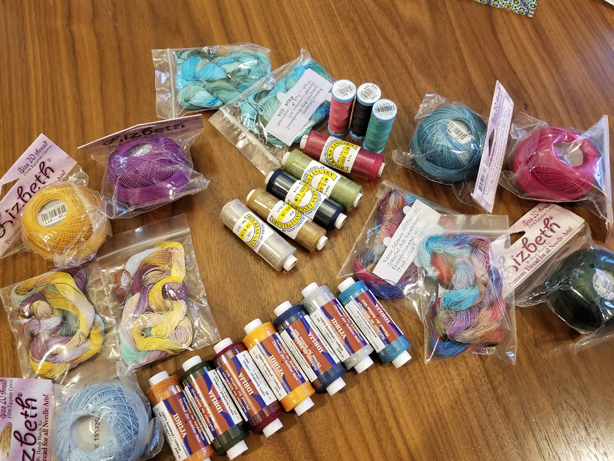This past week was full of highs and lows, I sort of felt like a pinball. Monday was the first day of spring, and here in the northeast, we have been hitting temps of about 60 when it is sunny, with steady spring rain in between. I walk into town, and everything has the smallest of buds, ready to just burst apart in some kind of chorus of life. I can’t wait for some color. Even my daffodils are just straining to bloom, tall stalks of yellow confined in their green outer skin.
On Tuesday, I had the wonderful opportunity to moderate an episode of the weekly Handweaver’s Guild of America Textiles and Tea. I prepared hard for this, did my research, collaborated with questions, and was thrilled that it all seemed to go extremely well. The person I interviewed, a knotter from Colorado, Al Canner, was really interesting, extremely talented, and made the most gorgeous work from the lowly macramé knot, the double half hitch, a throwback from the 70’s and the jute plant hangers with the ceramic owl eyes. I still can’t wrap my head around the work he does now, with one foot in the past. My first job out of college was teaching in a mall craft shop in Paramus, NJ, macramé, specifically owl plant hangers. Check out his work, there is nothing like it that I’ve seen in the fiber world. And the interview is on the HGA Facebook page, and will eventually make its way to their YouTube channel.
On Wednesday, my late husband’s birthday, I found out that two people who I really really respected and who had tremendous influence in my life, passed away. One was a weaver in the Pacific northwest, who died suddenly in a house fire from what I understand, and I’m still saddened and stunned that such a spark of life could be so snuffed out in a heartbeat. She was probably the most enthusiastic student I ever had in a class, just a joy to teach, and she will be truly missed. Rest easy Dori.
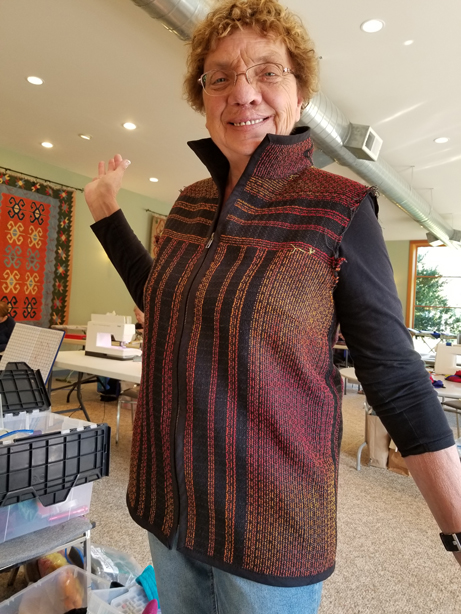
The other loss was a close friend, here in North Jersey. Ed and I shared a lot of good times creating music together, working on huge projects for Montclair Early Music, and a lot of sushi lunches from my favorite sushi place. I will miss his gentle spirit and musical talent. Too many losses.
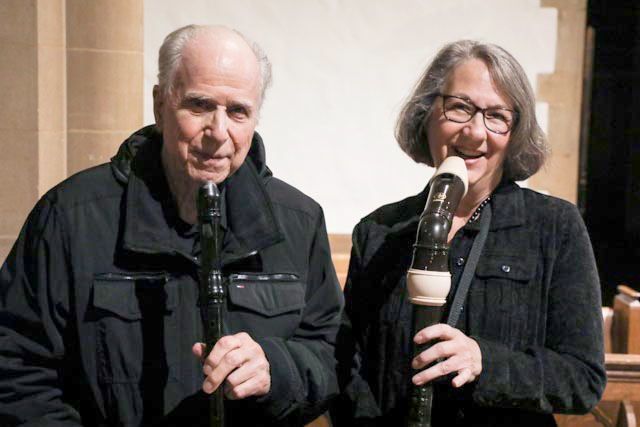
So on Wednesday, with news of both deaths, and yet wanting to celebrate my late husband on his day, my daughter and I headed out to the garden center for our annual early spring trek, for pansies and lettuces and I was really really disappointed to find out that no one had any in stock. Which shocked me. Everyone had pansies this time last year, and the year before that. It hasn’t been that cold. I’ve since learned of a couple of places, but the point was, to do something to commemorate my late husband’s birthday. On his birthday. So instead, my daughter and I dressed all the beds after an intense clean out, fertilized, topped off the soil, and planted whatever seeds were in the back of the refrigerator that could go in the ground now. Of course, the hoses aren’t turned on yet, so watering will have to be done by dragging buckets from the house. Not something I look forward to. As if my husband smiled on us, it rained the next day, and then yesterday, and it is supposed to rain tomorrow. It’s like he said, “I’ve got this…”

Which allowed me some lovely studio time. One of my guild mates who lives nearby, came over to work on one of the Structos. I have so many set up with interesting structures. She picked the one with 8 Shaft Honeycomb variants on it, from Malin Selander’s Weave a Weave, specifically the Isolde version. (They are named after operas,) She worked on it for a couple of hours, and I finished it off a few days later. That’s a flat surface, but the deflection in the honeycomb around the gold threads creates the illusion of a wavy fabric.
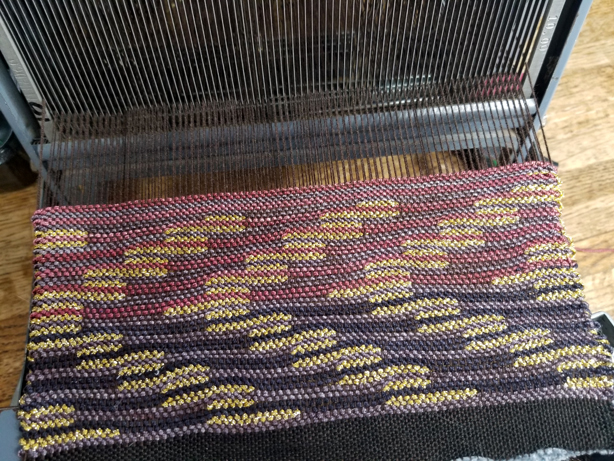
And of course, my last blog post left everyone hanging with the threading of 8/2 Tencel in an Echo parallel threading on my 12-shaft Voyager Table Loom. It is gorgeous. (The draft is from Denise Kovnat, from her collection of WIF files for Echo Weave available on her website. This is a variation) I feel like there are so many cool things to weave in my studio; I’m a bit addicted to setting up looms, but at some point, I really need to weave what’s on them!
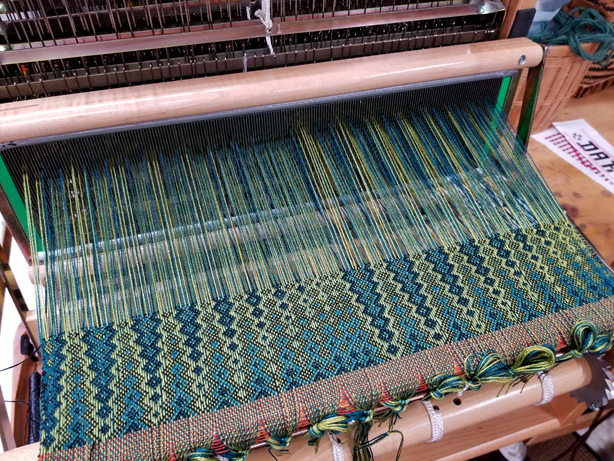
While showing my guild mate all the options with my Structos, I realized that one of them, though threaded for a Theo Moorman technique, hadn’t actually been woven on. I had cut off the piece that was on it, re-tied onto the front, and just left it. So I found a cool photo of the pansies from this time last year, what should have been in my flower pots by now, printed it on silk Crepe de Chine, and started cutting it into strips to weave in an inlay technique. The ground is linen, and the tie-down threads are serger thread. Barely visible. The technique is documented in my monograph called Weave a Memory. It is available digitally.
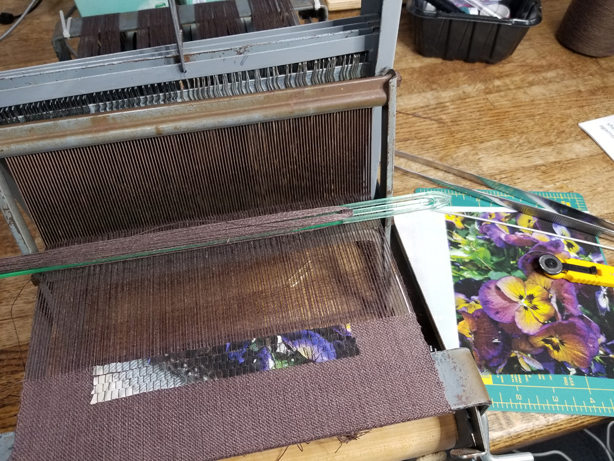

Those needlework threads I talked about last time, that I purchased from the Lace Day event? They have been calling me. I sat down after calculating the repeat in the handpainted threads, and figured out how many ends, five yards long, I could get with what I purchased in a specific color grouping. Something like 153 ends. So I sat with my weaving software and did a few versions until I liked what I had.
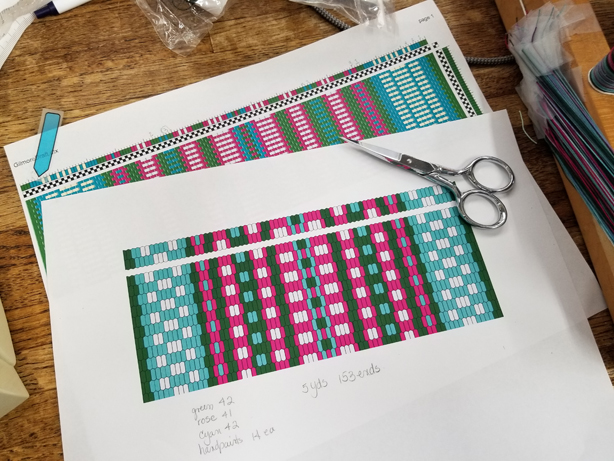
I wound the warp carefully, starting and tying together each end in a loop by the cross, since I would be using a loom I haven’t actually used before, my Gilmore Wave Mini. We named him Quark, (from Deep Space 9, I think). I’m a front to back warper, but the design of this loom requires warping back to front. Normally I would have wound each color separately, and incorporated the chains in the reed, following my draft. In this loom, as in inkle looms, there is no reed, so I had to wind the entire sequence of 153 threads, and try hard to get the handpainted colors to match up. I couldn’t exhale until I had wound the entire warp, because I was so afraid of running short. My calculations held, and I ended up having enough, but that would have been pretty depressing to have had to go to Plan B…
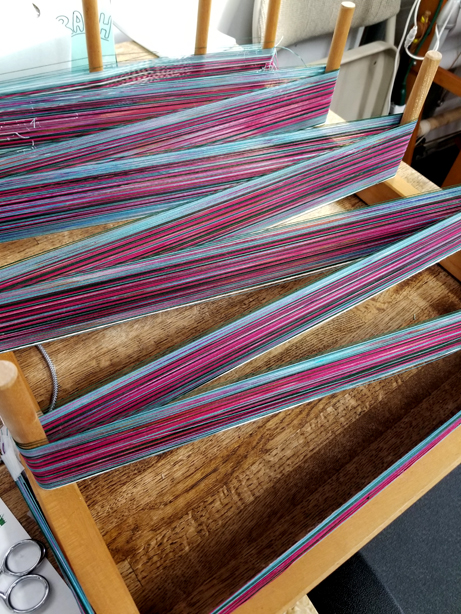
The directions for setting up this loom are strange. The Lease Sticks, two fat knitting needles that slip into the cross, and mount on the back of the loom, work fine for winding, but they have you add metal supports to the warp beam to channel the warp into something like a sectional warp. It doesn’t work. I needed precision winding, to keep the colors from shifting. After winding on 5 yards, I ended up pulling the entire thing back off and winding my own way, which has never failed me; a couple of fat zip ties on the back support, and stiff interfacing for packing material.
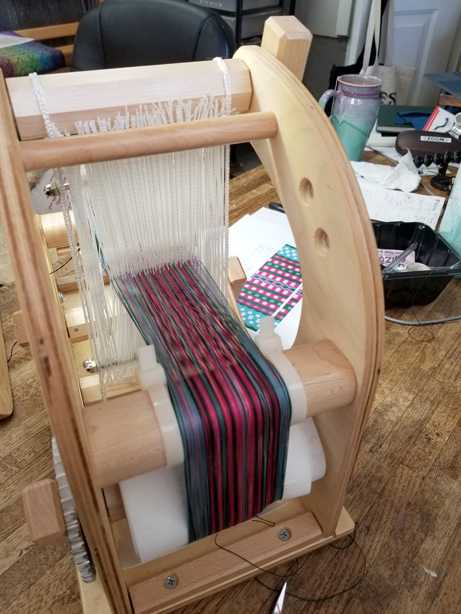
Threading from the lease sticks which are suspended a good five inches from the eyes of the Texsolv heddles, which are very densely packed together because this will be a warp face band, proved ridiculous. I ended up pulling the lease sticks and replacing them with a cross tie, like I always use, and just holding the cross in my hand and threading the heddles like I do when I thread the reed. Worked like a charm.
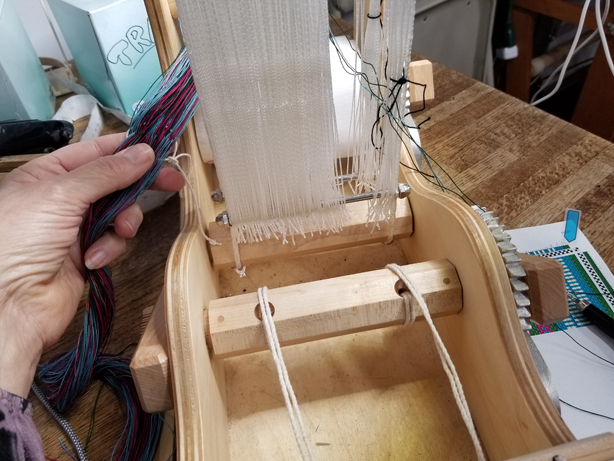
There is always a learning curve with every new piece of equipment I use. Weaving is weaving, but each loom has a personality, quirks, and oddities that make it unique. It is a team effort. So now I’m happily weaving away on this incredible loom, now that it is set up. It does weave like a dream. I’ve never seen such a small loom have the ability to tighten a warp so tight you can bounce on it. And the colors are lining up perfectly.
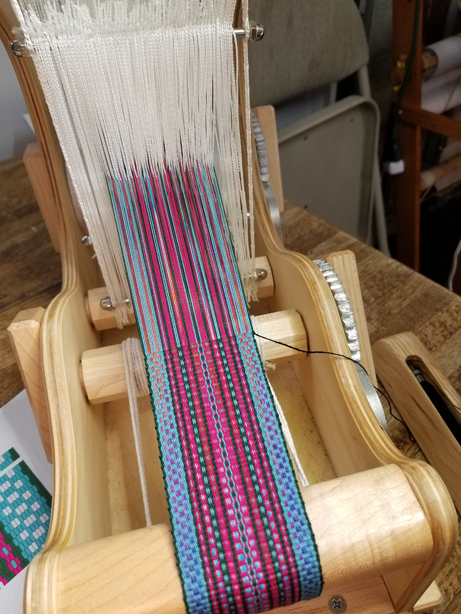
Life throws you curve balls, and people come into your life and leave. I am a better person for having known Dori and Ed, and I wish them peace on their new journey. And for those of us left behind, I wish for the will to keep on planting, and designing, and playing music, and welcoming the budding trees and bulbs in a joyous celebration of life.
Stay tuned…
